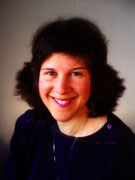| | Homeopathy: T.L.C. for the Tender Gender | |
I attended a fascinating presentation last week on the history of
the women's water cure movement in the United States. The presenter, Susan
Cayleff, Ph.D., a highly articulate medical historian specializing in women,
really opened my eyes to what it was like to seek health care as a woman in the
1800's. Women were stuffed into corsets with twelve-inch waists, causing them
to faint frequently, and necessitating the use of smelling salts. In fact, many
women had their bottom two ribs surgically removed so they could better fit
into their tiny dresses. The average dress, Susan told us, weighed 45 pounds
below the waist. She referred to these garments as "unnatural incendiary
devices", which often proved fatal to those women who stood too close to a fire
or stove. It was such an accident that led to death of Edgar Allen Poe's wife.
Liberal women of the day found their niche in the water cure movement, the
counterpart at that time of naturopathic medicine. Susan describes in detail
the nature cure centers as "invigorating natural experiences". Such healing
centers, popular in the mid nineteenth century, were havens where progressive
women of the day, as well as those who were seriously ill, sought out female
physicians, physical education, kindred spirits (bonding closely in sisterhood
with like-minded women), dress reform, an atmosphere of culture and refinement,
and, perhaps most importantly, a rest from conception. Popular nature cure
treatments included sitz baths, fomentations (packs), douches, a variety of
therapeutic baths, a primarily vegan diet, and frequent walks in nature. Such
ladies as Harriet Beecher Stowe escaped to the nature cure centers as often as
possible, spending up to nine or eighteen months in these natural paradises
before returning to their status of nearly perpetual pregnancy. (Harriet had
eleven pregnancies). Susan shared with us that in the early 1900's, Theodore
Roosevelt vehemently advised all Caucasian women to bear at least six
children so that minorities, immigrating in large numbers, would not dominate
this country. His advice was probably designed also to keep women "out of
trouble".
Prior to the twentieth century, women had very few choices in their
health care. Times have changed and we have come a long way since then! The
women's self-help health movement in the 1960's paved the way by teaching women
about the anatomy adn physiology of their reproductive systems and empowered
them to do their own speculum exams. There are now many more women physicians
and alternative practitioners. Women are becoming more aware of what they want
for their health care and seeking out practitioners and treatments they really
believe in and that will support who they are. Patriarchal medicine is no
longer acceptable to a large number of women. Cervical caps are again
available. Self-breast exams are done by most women. We are beginning to take
charge of our own healing processes. Now, amidst the myriad of options, we as
women have many choices to make. I'd like to share with you some
recommendations which will hopefully make those choices a bit easier.
l. A gentle, safe healing atmosphere. By "the tender
gender", I am referring to the beautiful feminine qualities of sensitivity,
compassion, and sincere caring. When a woman places her trust in a healer, she
deserves be treated with the utmost of sensitivity to her body, her feelings,
her beliefs, and her issues. Healing is truly a sacred relationship between
healer and healee. Each woman needs to find a practitioner, whether female or
male, who will listen to and carefully consider her needs and experiences in an
environment of safety and trust. She should be treated with kindness and
compassion. Any procedures should be performed with gentleness and care.
Information should be shared openly and freely so that the women fully
understands the diagnosis, the treatment, and her choices. Absolutely no sexual
abuse in any form, even subtle innuendos, are part of a sacred healing process.
Pelvic exams, even if performed gently, place women in an extremely vulnerable
position, especially women who have had traumatic sexual or gynecologic
experiences. Such exams should be done as gently as possible, informing the
woman of each step and educating her as much as possible about her body.
 | Judyth Reichenberg-Ullman, ND, DHANP, MSW is a licensed naturopathic physician board certified in homeopathic medicine. She graduated with a degree in ...more |
|
|
Popular Related Articles/Areas
Popular & Related Products
Popular & Featured Events
Dimensions of Wellness
|
|